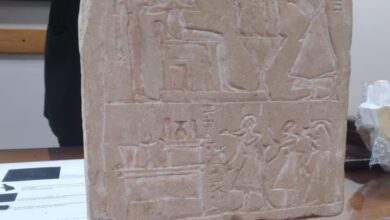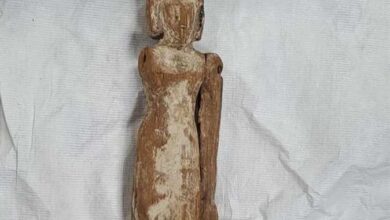The dismantlement of an international mummy and artifact smuggling ring by US authorities in July raised alarms about the status of stolen Egyptian artifacts in transnational black markets.
The daily newspaper Metro-New York recently reported that three New York men were arrested for smuggling 2000-year-old Egyptian artifacts into the US from the United Arab Emirates by lying custom officials about the contents of their luggage. In this case, the antiquities were worth US$2.5 million.
Experts say the discovered amount is only the tip of the smuggling iceberg.
Salima Ikram, professor of Egyptology at the American University in Cairo and a leading expert on animal mummies, says the smuggling begins in various sites in Egypt and ends up in the hands of antiquity dealers in Europe, the US, and some areas in the Gulf.
“By removing a mummy, or indeed any artifact, from its context we are destroying its meaning and what it can contribute to the sum of human knowledge,” says Ikram.
"Also by removing mummies illegally," she adds, "they and their surroundings are being destroyed. Thus, a piece of Egyptian history is lost forever."
Due to the unrest in Egypt in January and February, the looting of ancient objects and the smuggling of these has risen considerably, according to France Desmarais, director of programs at the International Committee of Museums (ICOM). Officially, 54 objects are missing from Egypt since the revolution, but Desmarais does not believe the looting and smuggling is finished.
“In view of the country’s history regarding looting and the general need to protect cultural objects from international illegal trade and export, being aware of current [security situation] remains necessary,” Desmarais says.
Therefore the ICOM has decided to create a "red list" of objects that are under threat from antiquity thieves. The Egyptian Red List Committee, which consists of experts from the Supreme Council of Antiquities and the ICOM, along with international and local experts, has listed a description of categories or types of cultural items that are most likely to be illegally bought and sold.
“'The Emergency Red List of Egyptian Cultural Objects at Risk’ is not a list of stolen objects, it is a list of categories of objects that are protected by Egyptian and international legislation and that are most at risk of being illicitly exported and traded,” Desmarais explains.
The list will be distributed to customs officials and antiquity art markets worldwide and should function as a sort of a checklist in order to draw border officials’ and art dealers' attentions to the illicit trafficking of artifacts.
Art dealers and auction houses are encouraged not to sell any such objects without having thoroughly researched their origins, and border officials are encouraged to be more aware of ancient Egyptian objects being smuggled through.
Ikram, who is a member of the committee, hopes that the list will make it much more difficult for smugglers to bring the artifacts out of their countries unnoticed and later sell them abroad.
The red list is expected to be announced in November. In the meantime, other international efforts are underway to stop thefts at archaeological sites.
In May, a delegation of individuals representing US associations and foundations interested in safeguarding Egypt’s antiquities from theft visited Cairo in a quest to collaborate with Egyptian authorities in confronting organized antiquity theft.




